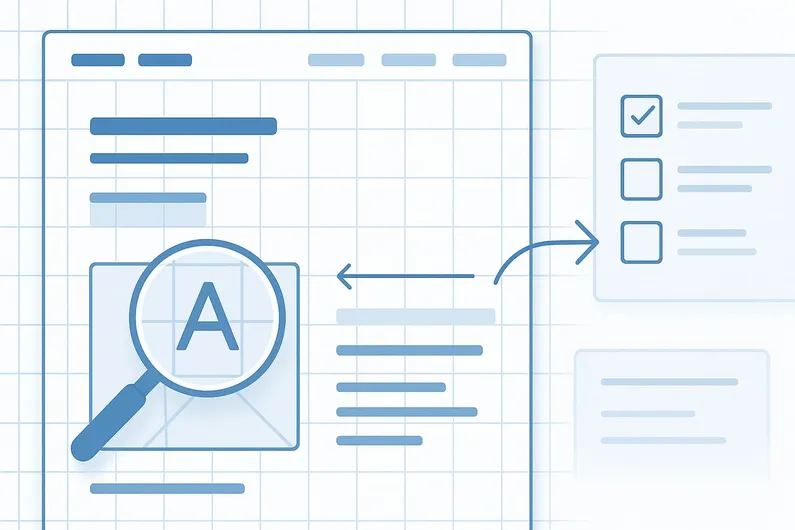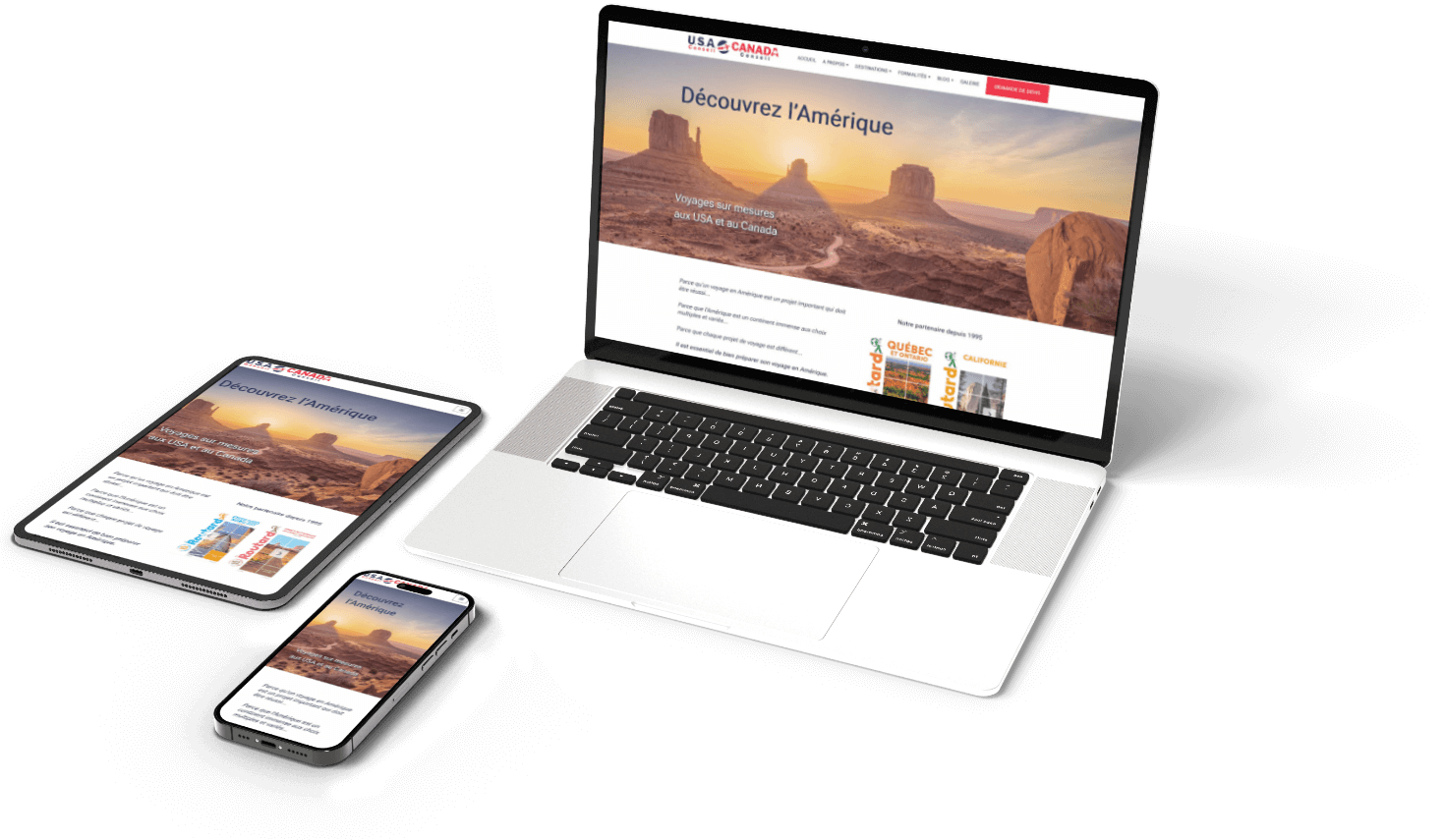
7 Web Design Rules You’re Probably Overlooking
Your website might look great, but if it’s not converting visitors into customers, you’re missing out on revenue. Many businesses focus on aesthetics while overlooking critical design rules that directly impact conversions. If you’re seeing multiple issues, it might be time for a complete website redesign.
After analyzing hundreds of websites and conversion data, we’ve identified 7 overlooked web design rules that are silently killing your conversions. Fix these issues, and you could see a 25%+ boost in your conversion rates.
Rule 1: Mobile-First Design Isn’t Optional
The Problem: 62% of web traffic is mobile, yet many sites are still designed desktop-first.
Why It Hurts Conversions:
- Poor mobile experience leads to 61% higher bounce rates
- Slow mobile loading causes 53% of users to abandon sites
- Difficult navigation on mobile reduces conversions by 20%
How to Fix It:
/* Use mobile-first CSS approach */
.container {
width: 100%;
padding: 1rem;
}
@media (min-width: 768px) {
.container {
max-width: 1200px;
margin: 0 auto;
padding: 2rem;
}
}Quick Wins:
- Test your site on real mobile devices
- Use Google’s Mobile-Friendly Test
- Ensure touch targets are at least 44px
- Optimize images for mobile screens
Rule 2: Loading Speed Directly Impacts Trust
The Problem: Users expect pages to load in under 3 seconds, but many sites take 5+ seconds.
Why It Hurts Conversions:
- 1-second delay reduces conversions by 7%
- 3-second delay increases bounce rate by 32%
- Slow sites appear unprofessional and untrustworthy
How to Fix It:
- Optimize images (use WebP format, compress to 80-85% quality)
- Minify CSS and JavaScript
- Use a Content Delivery Network (CDN)
- Enable browser caching
Tools to Check Speed:
- Google PageSpeed Insights
- GTmetrix
- WebPageTest
Need help improving speed? Read our Core Web Vitals optimization guide.
Rule 3: Clear Value Proposition Above the Fold
The Problem: Visitors don’t understand what you offer within 3 seconds of landing.
Why It Hurts Conversions:
- Unclear messaging confuses visitors
- No clear value prop increases bounce rate by 40%
- Weak headlines reduce engagement by 73%
How to Fix It:
<!-- Good example -->
<h1>Get 3x More Leads with Our SEO-Optimized Websites</h1>
<p>
We build fast, mobile-friendly websites that rank higher and convert better.
See results in 30 days or your money back.
</p>
<button>Get Your Free Website Audit</button>
<!-- Bad example -->
<h1>Welcome to Our Company</h1>
<p>We are a leading provider of digital solutions...</p>Elements to Include:
- Clear headline explaining your main benefit
- Subheading with specific value proposition
- Strong call-to-action button
- Social proof (testimonials, logos, numbers)
Rule 4: Navigation Should Be Intuitive, Not Creative
The Problem: Complex or “creative” navigation confuses users and hurts conversions.
Why It Hurts Conversions:
- Confusing navigation increases bounce rate by 25%
- Hidden important pages reduce conversions by 15%
- Too many menu items overwhelm users
How to Fix It:
<!-- Good navigation structure -->
<nav>
<ul>
<li><a href="/">Home</a></li>
<li><a href="/services/">Services</a></li>
<li><a href="/about/">About</a></li>
<li><a href="/contact/">Contact</a></li>
<li><a href="/blog/">Blog</a></li>
</ul>
</nav>Navigation Best Practices:
- Keep it simple (5-7 main items max)
- Use familiar labels (Services, About, Contact)
- Make it visible (always accessible)
- Include search for complex sites
Rule 5: Call-to-Action Buttons Need Contrast and Clarity
The Problem: Weak, unclear, or poorly placed CTAs reduce conversions significantly.
Why It Hurts Conversions:
- Unclear CTAs reduce clicks by 30%
- Poor button design decreases conversions by 20%
- Wrong placement can reduce conversions by 50%
How to Fix It:
/* Good CTA button styles */
.cta-button {
background-color: #ff6b35;
color: white;
padding: 15px 30px;
border: none;
border-radius: 5px;
font-size: 16px;
font-weight: bold;
cursor: pointer;
transition: background-color 0.3s;
}
.cta-button:hover {
background-color: #e55a2b;
}CTA Best Practices:
- Use action words (Get, Download, Start, Buy)
- Create urgency (Limited Time, Today Only)
- Make them stand out (contrasting colors)
- Place them prominently (above the fold, end of content)
Rule 6: Too Much Text Scares Users Away
The Problem: Walls of text overwhelm visitors and reduce engagement.
Why It Hurts Conversions:
- Long paragraphs reduce readability by 40%
- Dense content increases bounce rate by 30%
- No visual breaks decrease time on page by 25%
How to Fix It:
<!-- Good content structure -->
<h2>Why Choose Our Service?</h2>
<ul>
<li>✅ 30-day money-back guarantee</li>
<li>✅ 24/7 customer support</li>
<li>✅ Free setup and training</li>
</ul>
<p>
Ready to get started? <a href="/contact/">Contact us today</a> for a free
consultation.
</p>Content Optimization:
- Use bullet points and numbered lists
- Break up text with subheadings
- Include visuals (images, icons, charts)
- Keep paragraphs short (2-3 sentences max)
Rule 7: Trust Signals Are Non-Negotiable
The Problem: Visitors don’t trust your site without social proof and security indicators.
Why It Hurts Conversions:
- No trust signals reduce conversions by 15%
- Missing security badges increase cart abandonment by 20%
- No testimonials decrease credibility by 30%
How to Fix It:
<!-- Trust signals to include -->
<div class="trust-signals">
<img src="ssl-badge.png" alt="SSL Secured" />
<img src="money-back-guarantee.png" alt="30-Day Money Back" />
<div class="testimonial">
<p>"Amazing service! Increased our sales by 40%."</p>
<cite>- John Smith, CEO</cite>
</div>
</div>Essential Trust Signals:
- SSL certificate (HTTPS)
- Customer testimonials with photos
- Security badges (Norton, McAfee)
- Money-back guarantee
- Contact information (phone, address)
- Social media links
How to Audit Your Website
Step 1: Test Mobile Experience
- Use Google’s Mobile-Friendly Test
- Test on real devices
- Check touch target sizes
- Verify text readability
Step 2: Check Loading Speed
- Run PageSpeed Insights
- Test with GTmetrix
- Check Core Web Vitals
- Optimize slow-loading elements
Step 3: Review Content Clarity
- Ask: “What do we offer?” (should be clear in 3 seconds)
- Check headline effectiveness
- Review call-to-action buttons
- Assess content readability
Step 4: Test Navigation
- Try to find key pages
- Check menu clarity
- Test on different devices
- Verify search functionality
Step 5: Evaluate Trust Signals
- Look for security indicators
- Check for testimonials
- Verify contact information
- Assess professional appearance
Tools for Design Auditing
Free Tools
- Google PageSpeed Insights
- Google Mobile-Friendly Test
- GTmetrix
- WAVE (accessibility)
Paid Tools
- Hotjar (heat mapping)
- Crazy Egg (user behavior)
- UserTesting (user feedback)
- Optimizely (A/B testing)
Common Design Mistakes to Avoid
1. Prioritizing Aesthetics Over Function
- Beautiful but unusable designs hurt conversions
- Focus on user experience first, aesthetics second
- Test with real users before launching
2. Ignoring Accessibility
- Poor accessibility excludes potential customers
- Use proper contrast ratios (4.5:1 minimum)
- Include alt text for images
- Ensure keyboard navigation works
3. Overcomplicating the Design
- Simple designs often convert better
- Remove unnecessary elements
- Focus on the user’s goal
- Test different versions
Measuring Success
Key Metrics to Track
- Conversion rate (primary goal)
- Bounce rate (engagement)
- Time on page (content quality)
- Page load speed (user experience)
- Mobile traffic (device usage)
Expected Improvements
- 15-30% conversion rate increase
- 20-40% bounce rate reduction
- 25-50% mobile performance improvement
- Better user engagement across all devices
Conclusion
These 7 overlooked web design rules are silently killing your conversions. By addressing them systematically, you can significantly improve your website’s performance and revenue.
Priority order for fixes:
- Mobile optimization (biggest impact)
- Loading speed (trust and usability)
- Clear value proposition (conversion clarity)
- Intuitive navigation (user experience)
- Strong CTAs (conversion drivers)
- Readable content (engagement)
- Trust signals (credibility)
Ready to fix these issues? Contact us for a free website audit and custom optimization plan. Also explore our web design services or check if you need a full website redesign.
Remember: Good web design isn’t just about looking good—it’s about converting visitors into customers. Focus on user experience and conversion optimization for the best results.




